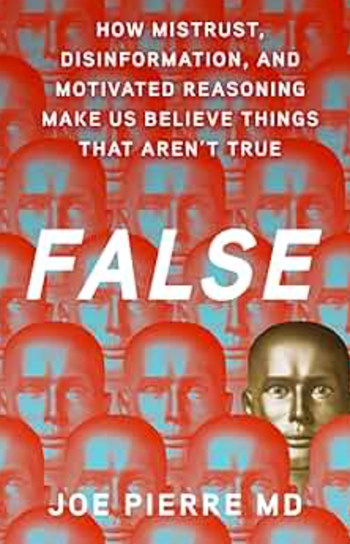
- Psychiatric Times Vol 29 No 4
- Volume 29
- Issue 4
Borderline Personality Disorder: New Reasons for Hope
Borderline Personality Disorder: New Reasons for Hope is one in a series being published by Johns Hopkins University Press on major psychiatric disorders.
Borderline personality disorder (BPD) affects about 1% of the population.1 Until recently, little information has been available on the subject for patients with BPD and/or their families. Now there is a fairly crowded market-I found several books online.
So how does this volume stand out?
The book is grounded in research, and its judgments are generally cautious. The authors usefully identify the reasons why clinicians often fail to diagnose BPD. The problems are based on the complexity of the disorder, its unfairly deserved reputation for chronicity, and the absence of any specific pharmacological treatment.2 Issues not dealt with in competing books, such as epidemiology, differential diagnosis, and cross-national differences, are described. The section on neuroimaging notes that such data are descriptive rather than explanatory.
A well-judged section on BPD in adolescence validates the diagnosis in that age-group. It cautions, however, that not all adolescents who self-mutilate or overdose on drugs go on to have BPD. In addition, the discussion of psychosocial risk factors avoids blaming parents for their child’s disorder.
Overall, the authors review a wide range of concepts with admirable simplicity. I had only a few differences of opinion with its conclusions. For example, they overestimate the value of medications in BPD, which have marginal efficacy and never lead to remission. However, it would not be possible to write a book on this subject that did not arouse controversy.
In summary, the book is thoughtful, accurate, and user-friendly. Because the authors avoid exaggeration and closely follow empirical evidence, it does not present the attractive, but misleading, impression that we understand what causes BPD or how to treat the most difficult cases.
References:
References
1. Lenzenweger MF, Lane MC, Loranger AW, Kessler RC. DSM-IV personality disorders in the National Comorbidity Survey Replication. Biol Psychiatry. 2007;62:553-564.
2. Paris J. Treatment of Borderline Personality Disorder: A Guide to Evidence-Based Practice. New York: Guilford Press; 2008.
Articles in this issue
over 13 years ago
On the Efficacy of Psychiatric Drugsover 13 years ago
Reviewers Question Utility of Clinical Trials in Schizophreniaover 13 years ago
A Dangerous Methodover 13 years ago
Guitar Shoppingover 13 years ago
Determination and Documentation of Insight in Psychiatric Inpatientsover 13 years ago
Sinking Into Griefover 13 years ago
Introduction: Strategies for Treatmentover 13 years ago
Psychopharmacological Treatment to Reduce Suicide Riskover 13 years ago
Psychopharmacology of Aggression and Violence in Mental IllnessNewsletter
Receive trusted psychiatric news, expert analysis, and clinical insights — subscribe today to support your practice and your patients.











